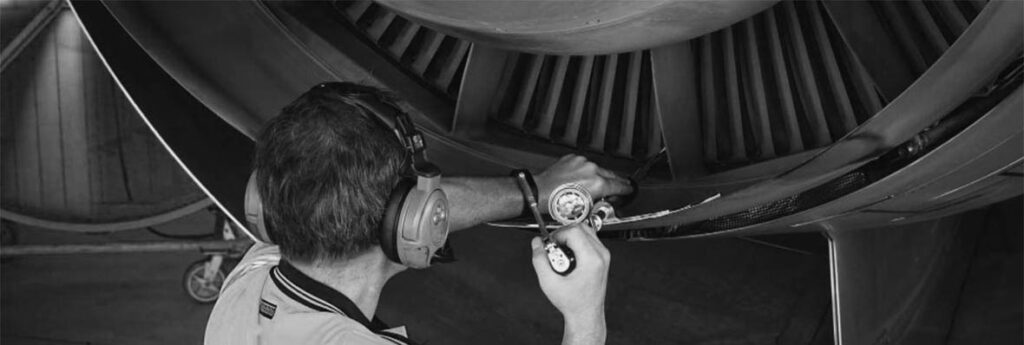Kwasi Bandoh, a senior recruiter for an airline, stood before a group of aviation mechanic students at their graduation ceremony last month and congratulated them for all having jobs. As some of the students began nudging each other, Bandoh realized that perhaps not every one of them had already been hired.
“Who doesn’t have a job?” Bandoh demanded, surveying the 15 graduates before him at the Pittsburgh Institute of Aeronautics’ training facility in Hagerstown, Maryland. “Who doesn’t? Because I have a job for you.”
The crowd of about 70 friends and relatives, gathered in a hangar where the students had been trained, laughed appreciatively. Fourteen of the 15 graduates did have jobs, and the only one who didn’t had an interview lined up for the next day.
As happy as the moment was for the graduates, it epitomized the struggles of recruiters for airlines, plane manufacturers and repair shops that are desperately seeking mechanics. Most of their existing mechanics are aging, and demand for travel is growing.
Across the North America economy, other industries, too, face the same formidable challenge: Replenishing a workforce diminished by a surge of retirements that began during the pandemic and has continued since.
Statistics Canada says more than one in five working adults is now nearing retirement – and the trend seems sure to accelerate.
The surge of retirements, along with a slowdown in immigration that began during the pandemic, are the primary factors behind the labour shortages that continue to bedevil some employers.
In the US airline industry alone, more than one-third of mechanics are between 55 and 64, according to government data. Fewer than one in 10 are under 30.
“Everybody’s getting ready to retire, and not enough people are coming in to take the jobs,” said Mike Myers, a maintenance manager for Piedmont Airlines, a regional feeder for American Airlines.
The new graduates of the Pittsburgh Institute of Aeronautics have been awed by how much they’re in demand. One of them, Will Gower, said he weighed multiple job offers at nearly twice the $15-an-hour wage he had earned at the retail job he held while in school.
“It was almost overwhelming how many companies were throwing jobs at you,” said Gower, 21. “Anywhere there’s an airport you can go work.”
In the past year, the air travel industry in the US has hired roughly 45,000 people, enlarging its workforce by 9% to more than a half-million. That’s triple the pace of the US economy’s overall hiring.
United Airlines has said it plans to hire 15,000 workers this year and more in coming years. It expects to add 2,300 pilots, in part to offset about 500 retirements. Kate Gebo, United’s executive VP of human resources, said she foresees a shortage of airplane mechanics, with up to half of United’s mechanics already eligible to retire.
Brian Prentice, a partner at the OliverWyman consulting firm, estimates that the US aviation industry will endure a shortage of up to 18,000 mechanics this year – about 12% of current staffing levels. It will likely boost pay levels across the industry.
Erik Hansen, a lobbyist for the US Travel Association, says his group is pushing for more funding for a federal development program that would subsidize aviation maintenance training schools and support more outreach to high schools to promote the industry as a career.
Without more workers, he said, further flight delays will inevitably result.
“You have an airplane that has a mechanical issue, and it needs to be fixed before it’s turned around,” Hansen said. “It takes longer for the mechanics to get to it. There’s going to be a flight delay. So, it’s absolutely something we need to address.”

